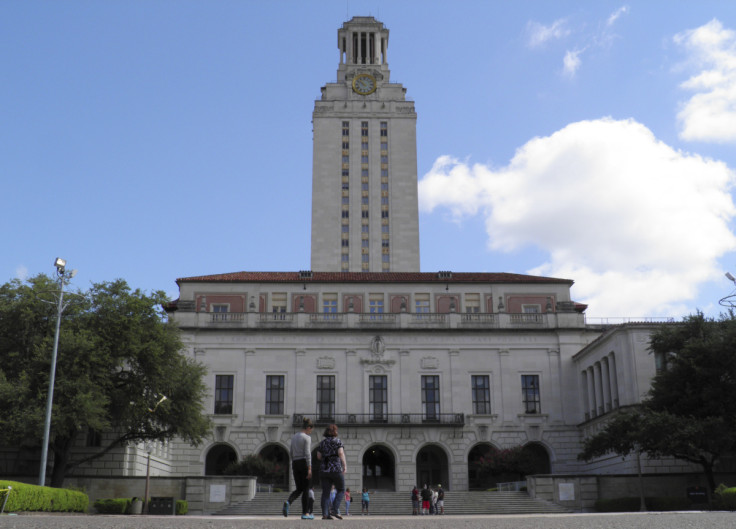
Latinos are making significant progress in obtaining college degrees in the U.S., but they still lag behind other demographics in this area, according to a report by Excelencia in Education recently released.
The analysis "Latinos in Higher Education: 2024 Compilation of Fast Facts," found that Latino students accounted for the vast majority — 79% — of the overall increase in degree attainment over the past five years, 4%.
However, 27% of Latinos had earned an associate degree or higher in 2021-22, compared to the 44% average, according to the document published by the nonprofit organization, which focuses on improving ways to promote higher education among Latinos.
Deborah Santiago, co-founder and CEO of Excelencia in Education, explained to The Latin Times that over the past decade and until the pandemic Latinos were accelerating degree completion at a higher rate than most other demographics.
"Then, in the last 2 or 3 years we continued increasing, though we are not closing the gaps in attainment as we were. So while we are still seeing some progress, it's plateaued a great deal from what it was before. And there continue to be gaps in degree attainment between Latinos and other groups," she said.
The following interview has been edited for length and clarity.

-Why do you say that Latinos still lag behind the average in degree completion? You mentioned the pandemic, but are there any other reasons?
Latinos are making progress, but there are three areas we've identified in our research that might explain why we're not seeing the continued acceleration at the level we would expect. First, there is academic preparation, because academic preparation and rigor when attending school virtually and lacking a support system is something that has been challenging. The pandemic has disproportionately affected Latinos. Second, there is affordability, as knowing how to pay for college and the amount has been a challenge for us. And third, there's college knowledge. Almost 40% of Latinos who attend college are the first in their family to do so. This means that family knowledge about how to enroll, choose, and pay for college is not always prevalent.
Regarding affordability, the study highlights that Latinos are more likely to receive the federal Pell Grant than federal student loans. Why is this happening? Do you believe it might be linked to the lower degree completion rate?
In general, Latinos are a little more averse to borrowing than some other racial ethnic groups. And as we've dug a little bit deeper, many of us come from countries of origin that didn't have a banking relationship or borrow or take out loans. And so we bring that kind of fiscal awareness and try to pay for things as we go. That has implications for not wanting to take out loans.
Employment and Persistency Among Latinos Enrolled in College
The study by Excelencia in Education shows that between 2019 and 2020, while 46% of Latino students enrolled exclusively full-time, the remaining 54% enrolled either exclusively part-time (27%) or mixed their enrollment (27%).
Another key finding underscores that, while most Latinos primarily saw themselves as students, more than half (56%) worked more than 30 hours a week. About 34% of Latino students in college worked 40 hours or more, 22% worked 30 to 39 hours, 25% worked 20-29 hours, and 19% worked between 1 and 19 hours.

Santiago says that there's a pragmatism about the decision to pay as they go, or to find affordable options. "It can impact our ability to complete a degree because sometimes we trade down. We go to a community college, we might stop out for a semester to earn enough money to pay tuition, and might go from full time to part time."
"We know those changes in the educational pathway decrease the possibility that we can earn our degree, because it's very easy when you're working to continue working and not have to balance work and school," she adds.
However, Excelencia in Education's CEO said that Latino students have proven to be "very persistent." For example, she highlighted that the study shows that "Latinos are more likely than any other group to still be enrolled in college after two and four years."
"We know it might take us longer due to some of our choices for making college affordable. But we are still committed to going. We just don't look like the traditional college going profile, but we are seeing Latino adults increasing in slightly greater numbers and, and the potential to bring more Latino students back to college as opportunities for action."
"Our Community Deserves Investment and Support"
The study highlighted the colleges serving Latinos are predominantly Hispanic-Serving Institutions (HSIs), and while "600 HSIs represent 20% of all colleges and universities, they educate 63% of Latino students."
Hispanic Serving institutions is a category that was created about 30 years ago, so it's relatively new. Most HSI are created because of demography and geography, and not so much intentionality and impact. And the reason I say that is that it's not necessarily that the institution is doing anything differently to serve Latinos better.
Why Latino students choose them instead of more prestigious institutions?
We know that HSIs tend to be much more affordable, they tend to be in locations where there is a large and growing Latino population, and the majority of Latinos are enrolling at an HSI. So this is kind of like the chicken and egg, you know, HSI are more likely to be open access, meaning, you just can show up and enroll. You don't have to take tests and things of that nature. So they're more accessible to our community. That does not mean that they are not quality institutions.
We've done focus groups with Latino students who are ready to HSI, and some of them don't even know their institution is an HSI, so they wouldn't have chosen because of the categorization. So Latino students tend to make college choices based on cost, location and access. Many conventional wisdom assumes that other students make choices based on financial aid, academic prestige and programs. And there are some wonderful agencies that are adjusting to meet Latino students where they're at and make them feel like they belong. They are transforming to serve Latinos. And this is why we talk about the Seal certified institutions. That is an opportunity. They're doing some things right.

Latinos are a heterogeneous demographic in the U.S. Regarding their origins, the study shows that the majority of Latinos attending college are of Mexican descent. Is this ethnicity data, along with others, consistent with demographic rates across the U.S.?
It is relatively consistent, but I will say not exactly. Students of Mexican descent represent about 55%, 60% of Latinos in this country, and they represent about 50% of those that are enrolled in college, half Latinos that are enrolled in college. So it's still slightly lower for the Mexican-American community or those of Mexican descent, as opposed to other populations which tend to be a little overrepresented compared to their population representation.
And I think some of that speaks to the, the migration patterns of our communities where the especially our Salvadoran and Central American population tend to be folks looking for a better life and better education opportunity who come to this country, whereas some others from South America and other places tend to have those who have an education already. So sometimes our Colombian, Venezuelan and Cuban communities tend to be a little bit more educated when they migrate here, as opposed to our Salvadorian and Puerto Rican populations.
What's your personal view on the gap among Latinos in higher education compared to other groups?
We believe talent is everywhere, but opportunity is not always there. However, we can take action to change that. As a nonprofit organization, we may be small, but our mission is to inform and educate people. Our community deserves investment and support, and we are ready to provide it. We just need the opportunity to make it happen.
Part of the reason we compiled this information is because there's still widespread ignorance about our community among policymakers, decision-makers, and funders. Outdated stereotypes persist, and we aim to correct them by showcasing our community's true profile. Our hope is that this profile informs and inspires people to take further action. We want them to consider where Latinos stand in relation to all opportunities for service.
© 2025 Latin Times. All rights reserved. Do not reproduce without permission.





